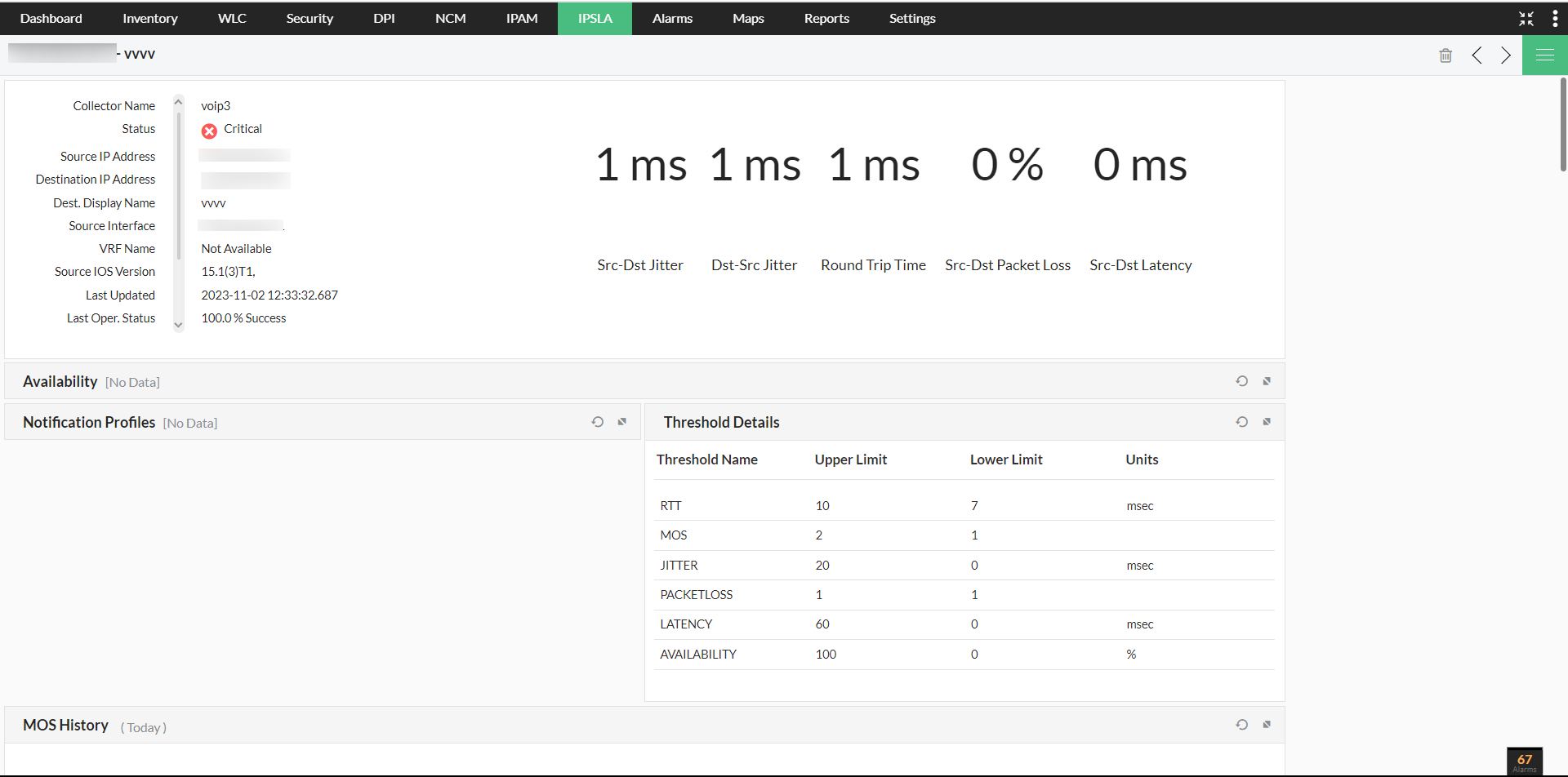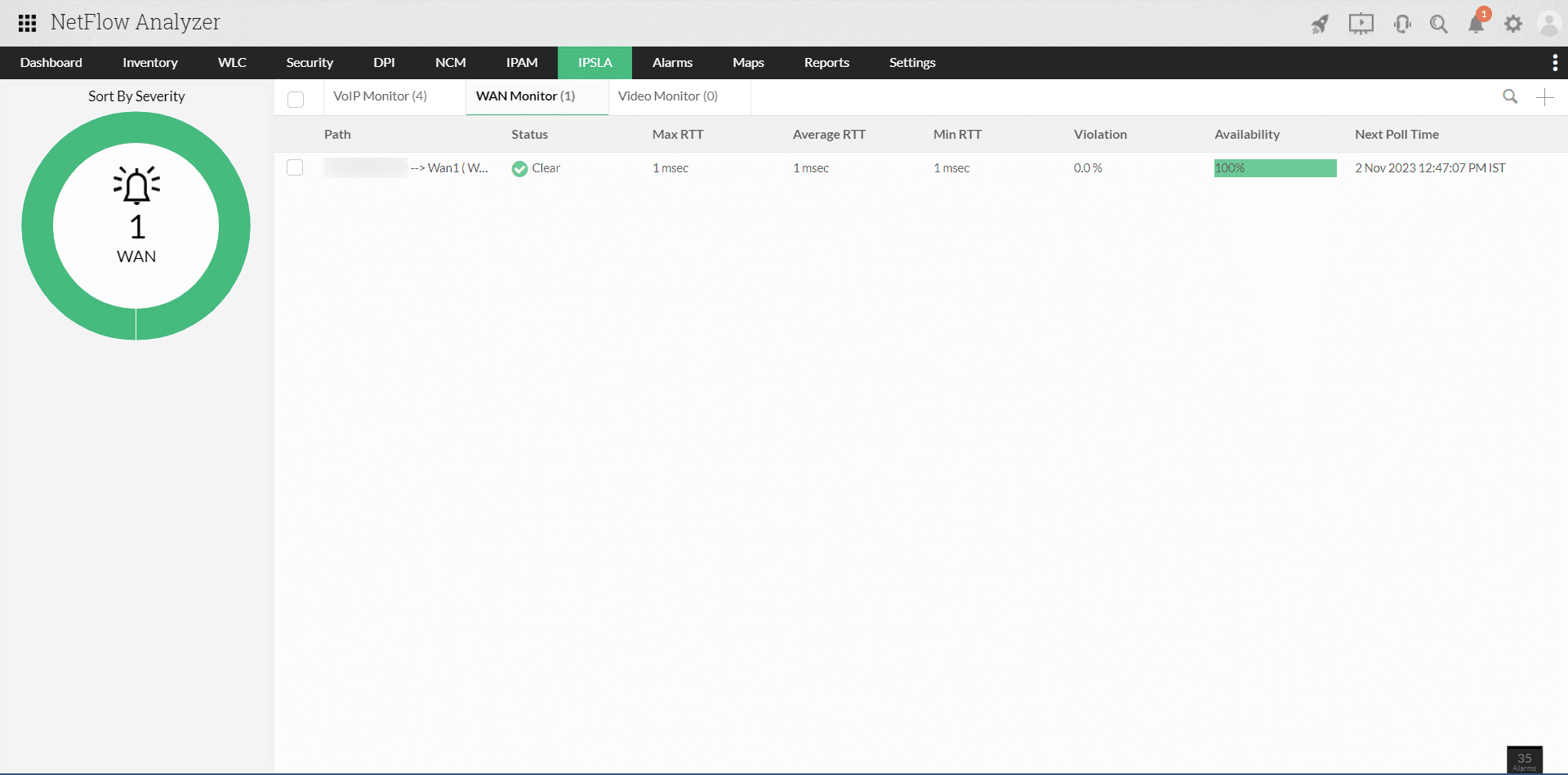Enterprise networks these days span on-premises and cloud environments, proving how their dependence on highly efficient IT has increased exponentially. Enterprises, especially those that are spread out globally, rely on critical operations like video conferences or VoIP calls. The very nature of such applications to be highly prone to packet loss, latency, and downtime issues demands a way to ensure optimal performance and uninterrupted communication services. Which brings us to this strategy: proactively monitoring the network traffic and IP services.
If you're managing a large enterprise, you need visibility into all the nodes to find the sources of problems and get an overview of how your overall network is doing. Cisco IP SLA reports provide the most vital metrics that help you build the most business-friendly network.
IP SLA is a technology founded by Cisco to test the performance of a network by simulating types of network traffic sent from an IP SLA source router to a destination. By simulating various kinds of traffic and analyzing them, IP SLA provides various performance statistics, such as jitter, packet loss, and the round-trip time (RTT), for Cisco IOS devices or remote IP devices.
IP SLA contains three timestamps; one is the originating timestamp, and the other two are the receive and transmit timestamps. As these names suggest, the IP SLA source router sends the originating timestamp, and the destination router inputs a receive timestamp and a transmit timestamp.
Therefore, IP SLA helps with:
SLA monitoring involves monitoring a network's current service levels against the agreed service levels. It helps you measure the response times, the performance of the network, and any downtime encountered. This involves identifying the effectiveness of SLAs.
Monitoring vital factors like jitter, latency, packet loss, and the mean opinion score can help you meet network needs, detect underperforming nodes, and uncover ineffective management. By viewing such insights, you can improve the user experience, optimize service performance, and decrease response times.
Measuring the WAN RTT is essential for ensuring the continuous availability and reliability of the network. This is a consequence of enterprises adopting the network for every single operation, considering the process improvement and cost efficiency it offers. But this also means that downtime is an expensive affair that could not just incur losses but also debilitate the business until the network is restored. Thus, monitoring the continuity of availability is essential.
Constant monitoring of service levels results in alerting the network administrator of possible hiccups that are liable to occur in the network.
NetFlow Analyzer uses Cisco IP SLA monitoring technology to offer streamlined, real-time insights into the performance of your network with continuous traffic monitoring and reporting capabilities. You get end-to-end visibility into potential bottlenecks, helping you accelerate troubleshooting and ensure the around-the-clock availability of business-critical applications. NetFlow Analyzer offers insights into all the metrics important to evaluating performance so that you can identify and resolve issues to ensure a seamless user experience.
Ensuring effective VoIP deployment is critical for internal and external parties associated with your organization. An efficient VoIP setup can help your organization as much as an ineffective setup can ruin your productivity. The VoIP monitor in NetFlow Analyzer helps you monitor the voice call quality between sites by generating traffic and providing key performance information such as jitter, latency, packet loss, and delay.

Connectivity is the most vital aspect of an enterprise that has its different parts woven together by a network. To ensure the seamless functioning of a business that largely depends on a network, maintaining constant connectivity is mandatory. The WAN RTT monitor is used to ensure quick response times and minimal disruptions to availability by monitoring the WAN, latency, and QoS with IP SLA management.

NetFlow Analyzer's IP SLA monitoring allows you to have visibility into errors and when the service levels are not met. This means you can establish thresholds for VoIP, WAN, and video metrics and get alerted when the collected values exceed the limits.

NetFlow Analyzer is a full-featured bandwidth monitoring and network traffic analysis solution that acts as an advanced IP SLA monitoring software for organizations. As flow-based software, it supports a wide range of flow formats and devices and eliminates blind spots in your dynamic IT.
Learn how to monitor your network health using Cisco IP SLA monitoring.
Register for a free, personalized demo now!
Featured links
Set pre-defined threshold settings based on utilization, duration and frequency to effectively monitor your network.
Ensure fair billing from your ISP. You could also use it for chargeback in your different departments
Assess future network requirements based on capacity planning reports.
Unearth the root cause of your network troubles and troubleshoot issues faster.
Ensure 100% network security by leveraging the power of our very own Continuous Stream Mining Engine for network behavioral analysis. Keep away scans, probes, DoS attacks and more.
Validate the effectiveness of your QoS policies using CBQoS reports from NetFlow Analyzer. Prioritize your network traffic accordingly.